Marine Pollution Detection and Polluter Identification
Two types of information service based on satellite data are available:
• Routine monitoring of a defined area of interest for the occurrence of oil slicks. In this case, the information provided includes a notification of the occurrence of an oil pollution event, its location and extent. In addition, the locations of vessels and the metocean conditions around the slick can also be provided. Finally, by fusing the oil slick information with AIS transponder information, potential polluters can also be identified
• Compilation of statistics on the occurrence of oil slicks in a defined area. This provides a characterisation of the spatial variation in oil slicks based on historic data. Information can be
compiled on inter-annual and interseasonal variability
Typically satellite radar imagery with a spatial resolution of 30 – 150m is used for oil slick detection. This ensures the widest possible coverage for a reliable detection of an oil slick.
Due to constraints associated with the use of the service and the fact that large oil slicks move only as a result of forcing by environmental conditions, a daily update frequency is usually sufficient.
This service is available world-wide although in some areas there may be a degradation of the information delivery time due to the lack of a suitably equipped ground station in the vicinity.
Detection of large oil slicks is almost 100% accurate. In some cases (e.g. accidents involving spillage of very heavy oils), the oil may float below the sea surface and be difficult to detect. In areas prone to sea ice formation, it may also be difficult to detect illicit discharges.
False alarms are an issue in oil slick detection. Naturally occurring surfactants such as algal blooms or natural seepage can create the same effect on the sea surface as an illicit discharge and be falsely reported as pollution. Similarly areas of low wind may appear similar to oil. For large slicks, false alarms are quite rare when the image analysis is performed by an interpreter with appropriate experience of the region of interest. As for fisheries control, the issue of the restricted times of day at which radar satellites pass over a given area of interest constrains the update times. As most organisations use the satellite derived information to optimise deployment of airborne surveillance, it is often the case that only the morning acquisitions are used as many surveillance aircraft operate during daylight.
Satellite derived information provides an initial notification of the occurrence of a pollution event within 20-30 minutes of the satellite passing over a given area. It also provides an analysis of the presence of potential polluters and an estimate of wind conditions.
Detection of an illicit discharge and identification of potential polluter in the Adriatic Sea. This demonstrates the operational interface to the EMSA CleanSeaNet service. Oil is delineated in red.
Example of the fusion of ENVISAT ASAR imagery showing a detected oil slick (the long black line running north-south) with AIS data to identify potential polluters. By matching the tracks of the vessels to the trajectory of the oil slick, the potential polluter can be identified. This is now fully operational within the EMSA CleanSeaNet service.
Example of the fusion of ENVISAT ASAR imagery showing a detected oil slick (the long black line running north-south) with AIS data to identify potential polluters. By matching the tracks of the vessels to the trajectory of the oil slick, the potential polluter can be identified. This is now fully operational within the EMSA
An ESA financed prototype oil slick detection and polluter identification system covering the Western Indian Ocean. The prototype was operated by CLS and based primarily on ESA Envisat data. In addition to routine surveillance, the system was also used to support emergency response such as removal of fuel from a rice carrier grounded on a coral reef. CREDITS: CLS, ESA and Mauritius Coast Guard
National authorities use this information to cue patrol aircraft to make an on-site inspection and also to complement airborne surveillance in regions where airborne operations are more difficult or costly. In addition, if an oil discharge is detected and a possible source vessel identified on the basis of AIS data then the national authority can request a Port Inspection at the next destination of this vessel. This represents an increased level of deterrence to ship masters against making illicit discharges. All of these capabilities are fully operational within the European Maritime Safety Agency (EMSA) CleanSeaNet system provided to EU Member States. This covers national waters and adjacent high seas areas subject to international environmental protection agreements. This gives rise to the following benefits:
• Optimisation of the deployment of conventional patrol assets. Authorities can be notified of areas identified as being clear of oil and areas where possible oil slicks have been detected, enabling flight hours to be targeted on the areas where they make the most impact
• Extension of the surveillance coverage beyond the immediate vicinity of patrolling assets. Limited airborne surveillance can be complemented by satellite overpasses, in particular for
areas far away from the aircraft base.
There are also benefits associated with offshore oil and gas production and exploration for new reserves – for example:
• Offshore oil and gas producers must ensure that an effective pollution detection system is in place but this can be costly and limit interest in more marginal basins. By using satellite based surveillance, costs are reduced, generating wider interest in operating licences for new production areas
• Seismic survey is time consuming and the survey vessel must be refuelled every few days. If this is done in port, it results in increased operations costs due to the associated down-time. Many operators request permission to refuel at sea but there is a strong associated risk of significant harm to the marine environment from leakage. In addition, such a process requires the presence of a representative of the national pollution control authority. By using satellite based monitoring, even small amounts of leakage can be detected and the requirement to transfer an observer to the refuelling vessels is avoided. This represents significant cost savings for the pollution control authority as well as requiring less time commitment from the monitoring personnel.
Finally satellite based detection of pollution from oil production platforms and under-sea wrecks can also be used to cue airborne surveillance. Sentinel-1 will provide routine coverage of most maritime areas world-wide, enabling cost effective pollution surveillance. When combined with national missions such as Radarsat 2/Radarsat Constellation, TerraSAR and Cosmo, updates every 12 hours over most marine areas will be possible. Sentinel-3 will provide the highest resolution ocean colour data enabling improved characterisation of naturally occurring surfactants and reducing false alarms for oil slick reporting.
Using ENVISAT ASAR data to monitor at-sea refuelling of a seismic survey vessel. The radar image shows the vessels in close proximity to each other and the surrounding area clear of pollution. CREDITS: ESA, CLS and Irish Coast Guard
References:
ESA 2013, Earth Observation for Green Growth: An overview of European and Canadian Industrial Capability
Products | Source | Descriptions | Product Standards | Ref. Project |
|---|---|---|---|---|
Monitor pollution at sea |
| coastal water quality |
|
Topic | Description | Keywords | Reference |
|---|---|---|---|
|
|
|
|

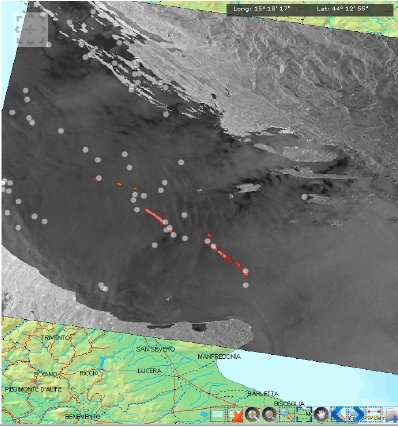
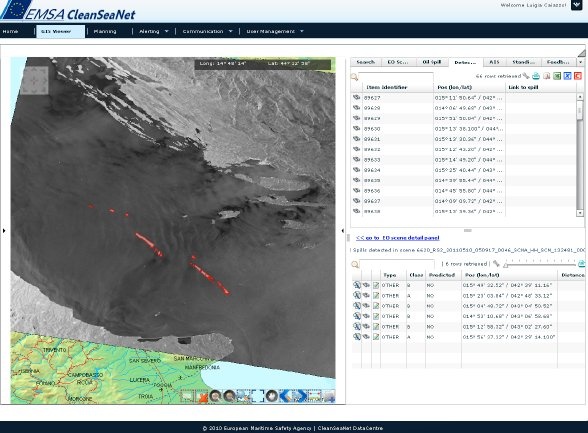
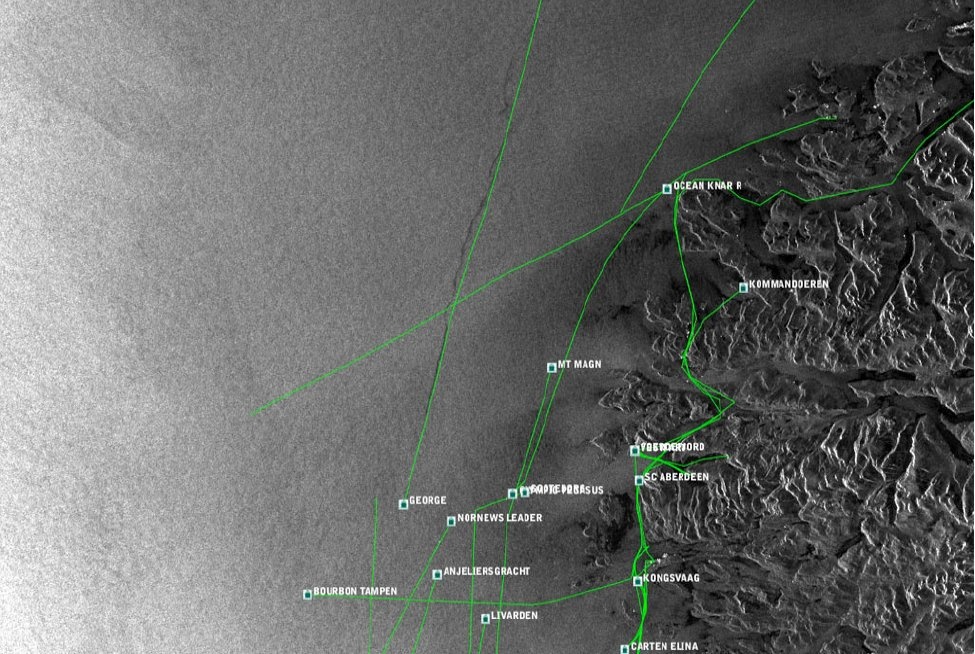
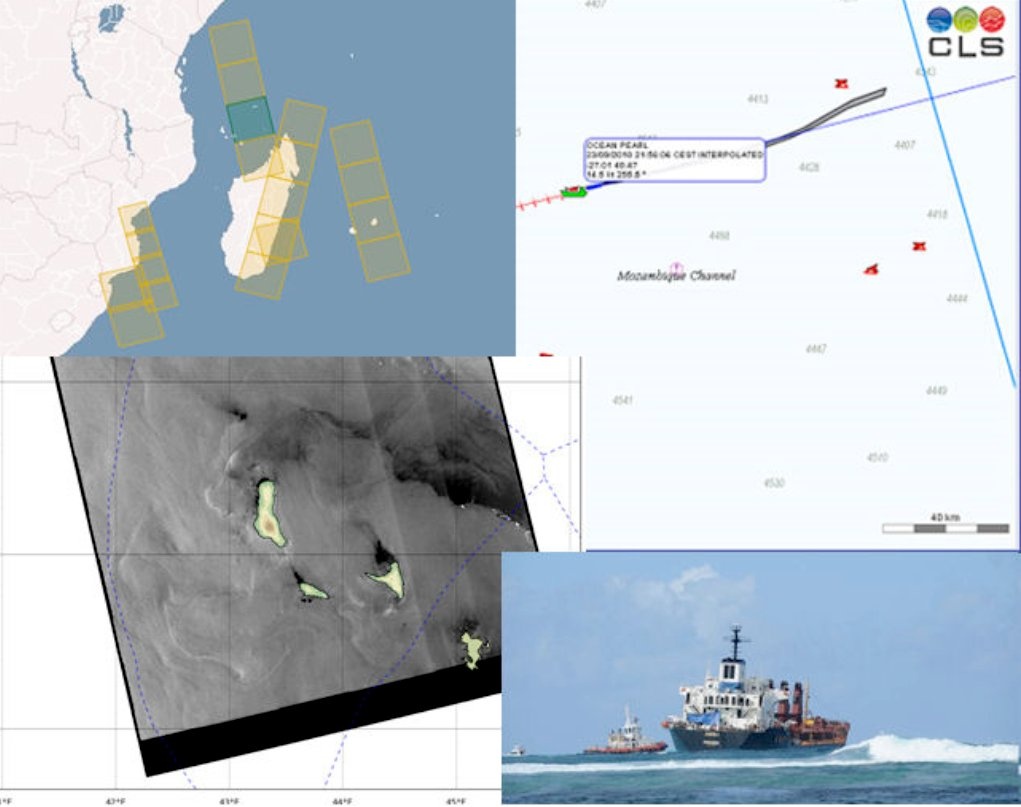
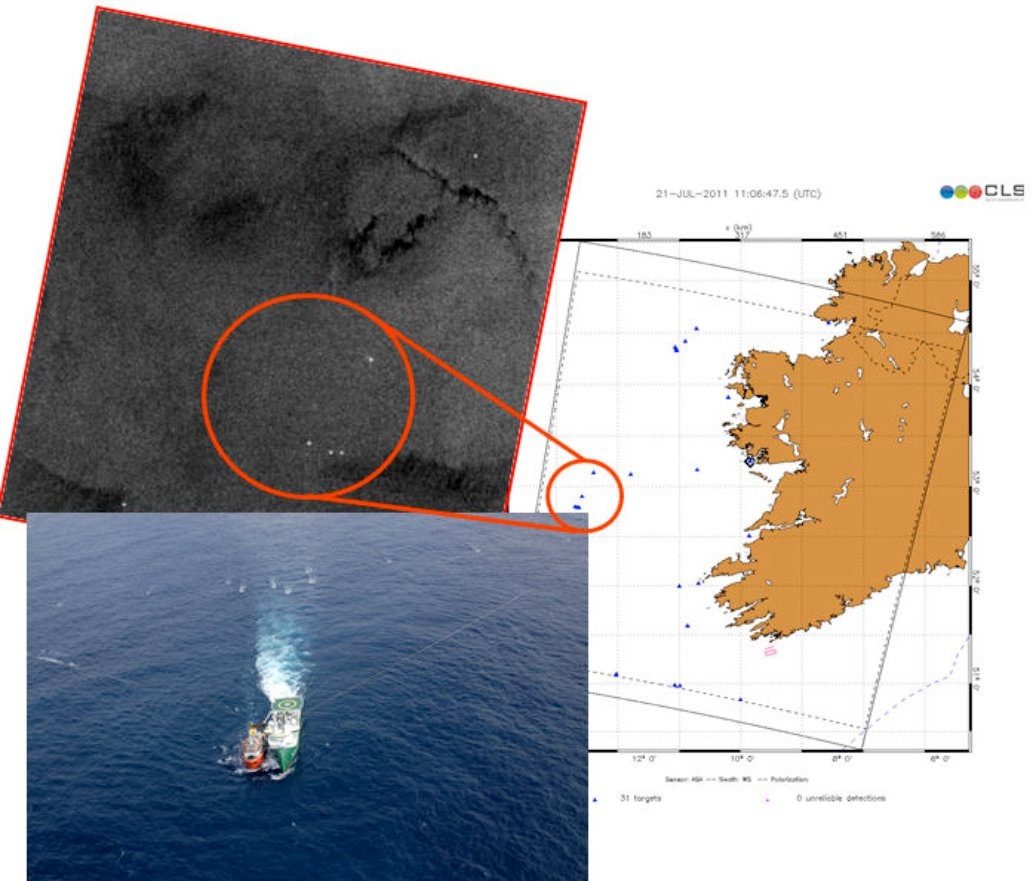
This page has no comments.